Contents
- Types of Honey. Description
- How to choose honey
- Useful properties of honey
- Types of honey depending on the honey plant
- Linden honey
- Acacia honey
- Sunflower honey
- Buckwheat honey
- Raspberry honey
- Barberry honey
- Burdock honey
- Budyak honey (honey from thistle)
- Cornflower honey
- Heather honey
- Mustard honey
- Pea honey
- Melilot honey
- Blackberry honey
- Hyssop honey
- Chestnut honey
- Swallow honey
- Pumpkin honey
- Alfalfa honey
- Angelica honey
- Melissa honey
- Clover honey
- Mint honey
- Dandelion honey
- Orange honey
- Motherwort honey
- Rowan honey
- Bruised honey
- Blueberry honey
- Sage honey
- Carrot honey
- Types of composite honey
- Types of Honey. Special types of natural honey
Types of Honey. Description
Honey is often cited as a healthy alternative to sugar. It is truly rich in vitamins and minerals that have tons of health benefits.
However, while some argue that honey can be a delicious and nutritious way to satisfy sugar cravings, others think honey is just a dessert high in sugar, albeit natural.
The main advantage of honey is its trace element composition. It will help to replenish the supply of nutrients: carbohydrates, minerals and trace elements. In addition, honey contains organic acids, vitamin C and B vitamins.
Honey is rich in antioxidants such as phenolic acids and flavonoids. They protect the body from the action of free radicals that destroy cells, and thus prevent the development of cancer, diabetes and cardiovascular diseases.
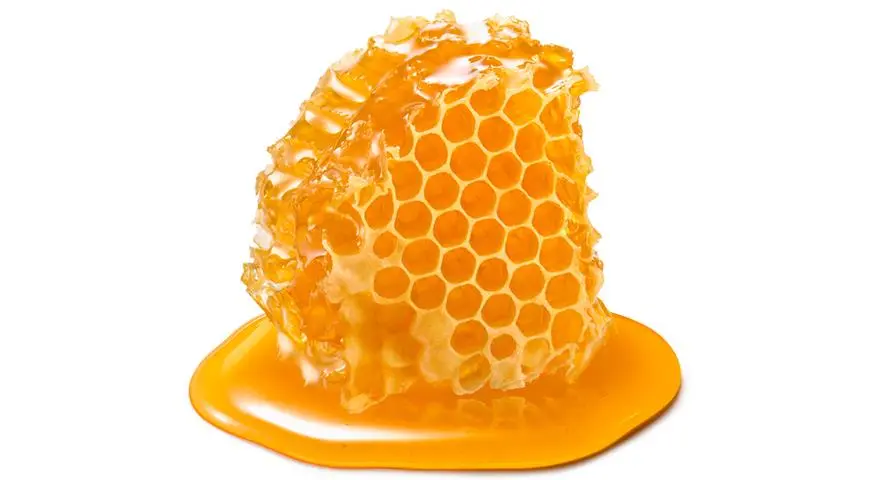
Studies in animals and humans have shown that replacing regular sugar with honey can help lower blood pressure as well as blood cholesterol and triglyceride levels.
Honey has antibacterial properties and is therefore useful in treating ulcers and skin conditions such as psoriasis, dermatitis, and herpes.
Honey stimulates digestion and thus improves metabolism. It normalizes acidity in the stomach and gastrointestinal microflora.
This product strengthens the immune system and relieves stress.
Honey is a popular cold remedy that weakens viruses.
The main disadvantage of honey is its high calorie content – 304 kcal per 100 g. According to nutritionists, the norm of sugar, honey or other sweeteners for an adult is up to 30 g per day. Eating more can lead to obesity and, as a result, liver disease and diabetes.
Excess sugar consumption may also be associated with a higher risk of depression, dementia, and even certain types of cancer.
It is not safe to give honey to babies under 12 months old. Bacterial honey spores can cause infant botulism, a rare but potentially life-threatening illness. Its main symptoms are constipation, general weakness, and a weak cry. The spores that cause botulism in infants are harmless to older children and adults.
In some people, honey can trigger an allergic reaction. It most often manifests itself as a rash on the skin and discomfort in the throat and nasopharynx. Also may occur: bronchospam, chest pain, swelling of the mucous membrane of the mouth and lips, conjunctivitis, diarrhea, abdominal pain and nausea. In addition, the temperature may rise, sweating and thirst may appear.
How to choose honey
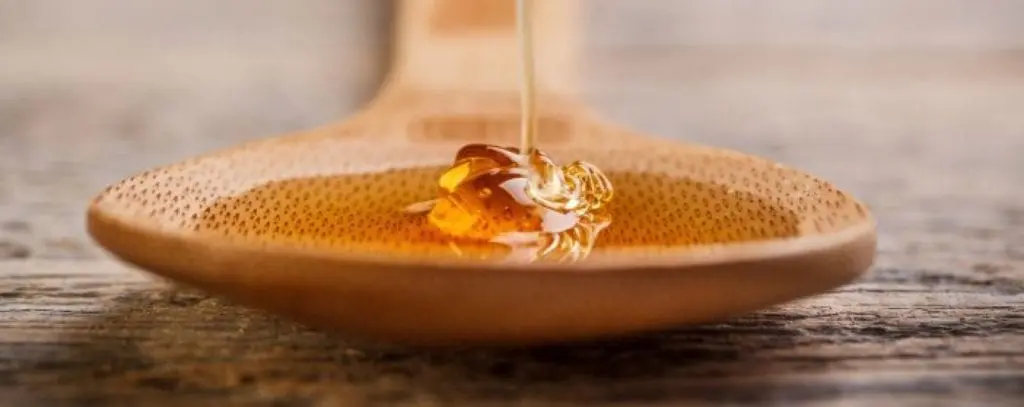
Honey must be purchased in stores where veterinary control over its quality is carried out, if the seller has documents confirming its quality.
The honey offered in the network marketing system for home delivery is usually of unknown origin. In such cases, falsification is very likely. Freshly squeezed honey does not drip from the spoon when it rotates, but when it drips, it falls like a slide.
In October, all natural honey, as a rule, should be crystallized. The only exception is white acacia honey from white acacia, which has a weak crystallization.
When checking by the organoleptic method (observation), it is necessary to know that honey must have a uniform consistency, have an appropriate flavor and aroma bouquet.
It is preferable to buy honey from a producer rather than a reseller.
The most preferred for purchase is honey produced in your area of residence, or within a radius of about 500 km.
When buying prepackaged honey, hand-packed honey has an advantage.
Useful properties of honey
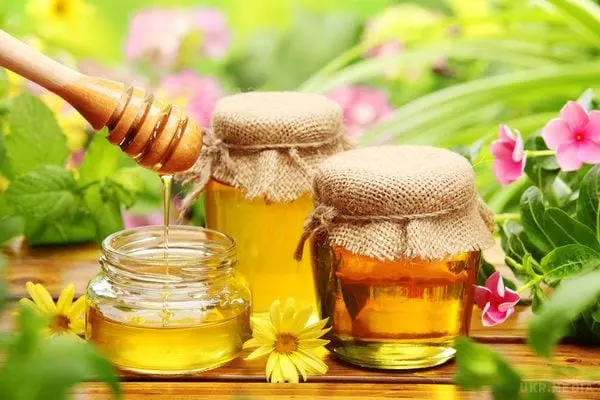
Honey is of plant origin, saturated with vitamins (A, B1, B2, B6, C, PP, K, E, pantothenic acid, folic acid) and contains more than 300 trace elements (manganese, silicon, aluminum, boron, chromium, copper, lithium, nickel, lead, tin, zinc, osmium and others), which significantly accelerate metabolic reactions in the body. The combination of trace elements is very close to the content of trace elements in human blood.
Honey is a combination of simple sugars (glucose, fructose), a small dose of toxins (pollen) and water. Honey contains 60 times more vitamin A than beef. Honey also contains organic acids (malic, tartaric, citric, lactic and oxalic), biogenic stimulants (which have a positive effect on the body, activating its vital functions).
Honey is absorbed by the human body 100%, which cannot be said about other products. Honey is not only an energetic carbohydrate product, but also a therapeutic and prophylactic agent that strengthens and rejuvenates the body.
Honey enhances immunity, has a bactericidal effect, has an anti-inflammatory and expectorant effect, has anesthetic and restorative properties, has a pronounced antiallergic effect. In folk medicine, honey has long been used for colds.
Honey reduces harsh, irritating coughs and relieves arthritis pain. Honey has a calming effect on the stomach. Honey also helps old people to stay healthy.
Types of honey depending on the honey plant
Linden honey
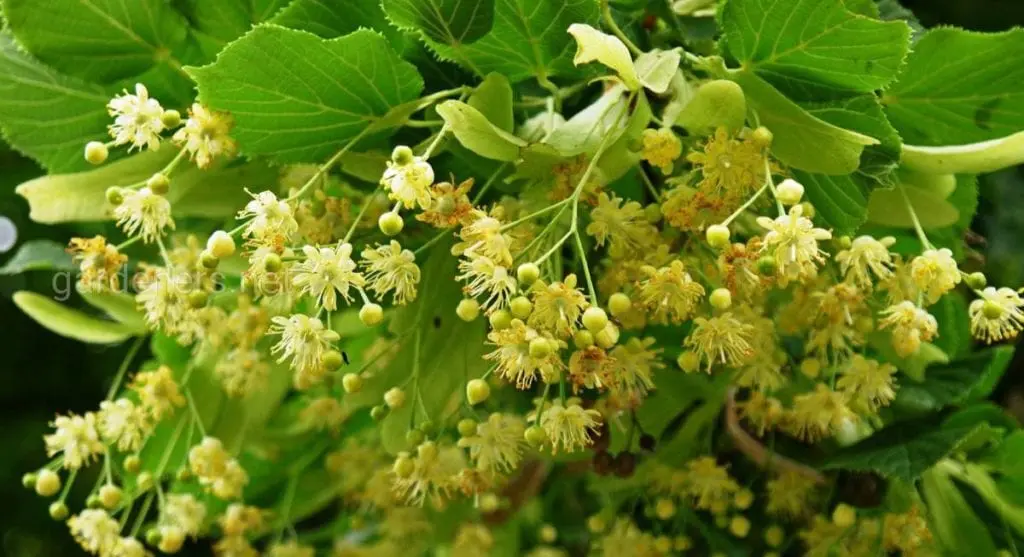
His right can be called a champion among all types of honey for its healing properties. Has a pleasant linden scent, pale yellow color. It quickly crystallizes in small crystals, crystallized honey of fat-like white color. Has a sharp specific taste. Differs in high nutritional and medicinal properties.
Has antibacterial properties. It has an expectorant, anti-inflammatory and slightly laxative effect. In folk medicine it is used in the treatment of tonsillitis, rhinitis, laryngitis, brongitis, tracheitis, bronchial asthma, as a cardio-strengthening agent, for inflammation of the gastrointestinal tract, kidney and biliary diseases.
Has antiseptic properties. It works well for purulent wounds and burns. This honey can be used in the treatment of any disease, if you do not have the appropriate type of honey used in the treatment of a particular disease at hand.
Acacia honey
Acacia honey is characterized by a delicate aroma and pleasant taste. Fresh honey has a light transparent color. It crystallizes very slowly, acquiring a milky white color; honey can be stored in syrup for a long time. Of all honeys, it is the most liquid. It is used as a general tonic, as well as for insomnia, gastrointestinal, biliary and renal diseases.
Sunflower honey
This is the main variety of beekeeping products in the southern regions of Ukraine. Has a characteristic pleasant taste and weak aroma. In liquid form, it is light golden in color. It crystallizes very quickly, crystals are large, crystallized yellow honey. It has good nutritional and medicinal (bactericidal) properties.
Buckwheat honey
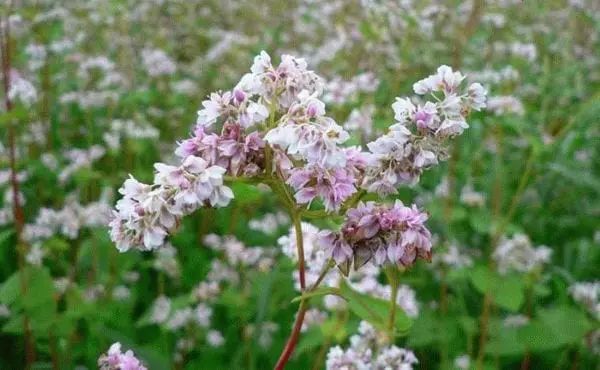
Buckwheat honey is obtained mainly in the forest-steppe and Polesye regions. It has a high content of proteins, minerals, a very pleasant strong specific aroma and taste. The color is light brown with a reddish tint. Excellent food and medicinal product.
Compared to other varieties, it contains more protein substances and mineral elements, such as iron. It is useful for anemia, for diseases of the digestive system, for liver disease, for the prevention of atherosclerosis and as a cardio-tonic.
Raspberry honey
This honey is collected by bees in forest clearings overgrown with raspberries. At this time, in the forest glades, forbs also bloom violently, so raspberry honey should rather be attributed to polyfloral honey. But raspberries in terms of nectar productivity are significantly superior to other modonos, and bees prefer to take nectar from it.
Raspberry honey has a light color, very pleasant aroma, wonderful taste. Raspberry honeycomb has delicate taste and melts in your mouth. Honey harvesting from raspberries begins in June – during the period of mass flowering. This honey is made from the nectar of wild and garden raspberry flowers.
When raspberries are in bloom, the bees fly past other flowers of honey plants, not paying attention to them. This is because the raspberry flower is tipped down. The bee, extracting nectar, is, as it were, under a natural canopy or umbrella and can work even in the rain.
Raspberry honey is used for colds, as well as a general tonic for vitamin deficiency, kidney diseases.
Barberry honey
Has a golden yellow color, pleasant aroma and delicate sweet taste. Bees vigorously process the nectar of the flowers of the common barberry shrub. The medicinal properties of barberry and honey based on it have been known since ancient times. It is used as a hemostatic agent.
Burdock honey

It has a pungent pleasant smell, is very viscous, fragrant and tasty. It has a light yellow color with a dark olive tint. This honey is collected by bees from small dark pink flowers of hairy burdock and burdock. It is used in the treatment of gastrointestinal diseases and in dermatological practice.
Budyak honey (honey from thistle)
Refers to first-class honey. It is either colorless, or greenish, or golden (light amber), has a pleasant aroma and taste. During crystallization, budyak honey becomes fine-grained. The bees collect it from beautiful crimson flowers of a weed with thorny stems and grayish leaves – a buddy or a thistle. It is used for insomnia and skin diseases.
Cornflower honey
Cornflower honey bees collect from blue or field cornflower. This honey is greenish-yellow in color, has a pleasant taste with a slightly bitter aftertaste. It smells like almonds. It has not only excellent taste, but also medicinal properties. It is used in the treatment of chronic skin diseases and eye diseases.
Heather honey
It has a dark, dark yellow and red-brown color, a weak aroma, a pleasant or tart bitter taste, quickly hardens, creating great difficulties when pumping it out of the combs. Unsuitable for wintering bees. Recommended for people suffering from lack of appetite.
Mustard honey
In a liquid state, it is golden yellow in color, then, solidifying, it acquires a creamy hue. It crystallizes in fine grains. Has a pleasant aroma and taste. It has good nutritional and medicinal properties. Recommended for diseases of the respiratory system.
Pea honey
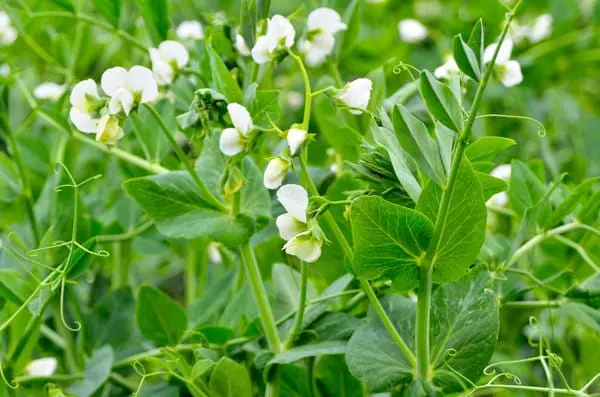
Pea honey is collected by bees from thin-leaved pea flowers, most often in the steppes. It is transparent, has a pleasant aroma and taste. It is used in the treatment of the digestive system.
Melilot honey
Possesses high taste. It can be different in color: from light amber to white with a greenish tint. It has a specific taste, sometimes slightly bitter, and a specific aroma reminiscent of vanilla. It crystallizes with the formation of a hard coarse-grained mass. It is used as a general tonic.
Blackberry honey
Blackberry honey, bees make beautiful flowers of the blackberry bush from the nectar. Blackberry honey is clear as water and tastes good. It is used in the treatment of colds and kidney diseases.
Hyssop honey
Bees make it from the nectar of dark blue flowers of a medicinal and melliferous semi-shrub plant – hyssop, which grows wild in eastern Ukraine, in the Crimea. Hyssop is specially bred in apiaries as a valuable honey plant. By its organoleptic properties, hyssop honey belongs to the first grade. It is used for insomnia and other diseases.
Chestnut honey
Dark in color with a faint aroma of chestnut flowers and a bitter aftertaste. During crystallization, it first takes on an oily appearance, after which the crystals themselves appear. Possesses valuable antimicrobial properties.
Bees make honey from the nectar of bell-shaped white-pink flowers of the decorative horse chestnut tree. This honey is transparent (colorless), liquid, but crystallizes easily and quickly, sometimes it tastes bitter. By its properties, it belongs to the category of noscort honey. It is used in the treatment of gastrointestinal diseases, as well as in the treatment of kidney diseases.
Swallow honey
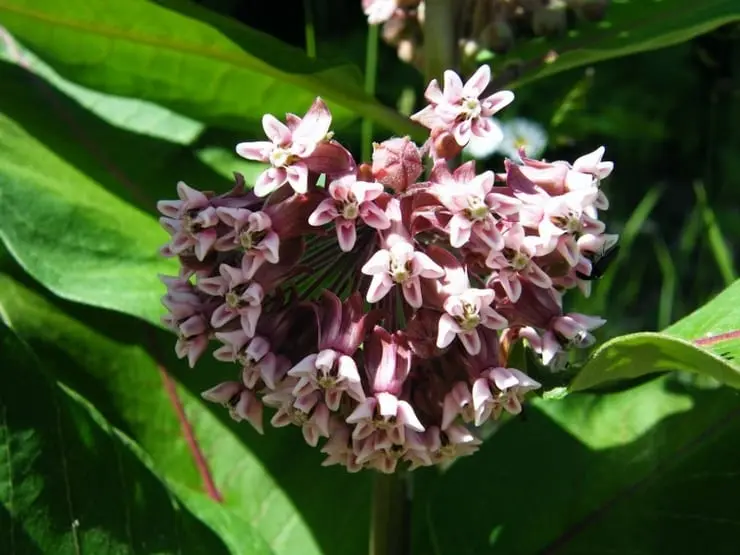
It has a delicate aroma and excellent taste. This honey, light with a yellow tint, is made by bees from fragrant nectar, a very valuable melliferous plant – the swallow (vatnik). In hot weather, salty honey is so thickened in combs that it is difficult to pump out even when heated. It is used for insomnia.
Pumpkin honey
Bees make it from the nectar of pumpkin flowers. This honey is golden yellow in color, with pleasant taste. Crystallizes quickly. It is used for diseases of the digestive system.
Alfalfa honey
Bees collect it from the lilac or purple flowers of alfalfa. Freshly squeezed honey has different shades – from white to amber, quickly crystallizes, acquiring a white color and the consistency of heavy cream. This honey has a pleasant aroma and specific taste. contains 36 – 37% glucose, 40% levolese. It is used in the treatment of gastrointestinal diseases and as a general tonic.
Angelica honey
Bees collect it from angelica flowers. Angelica honey has a pleasant aroma and taste. It is used in the treatment of gastrointestinal diseases, as well as to improve the activity of the central nervous system.
Melissa honey
Bees make melissa honey from the nectar of light purple or even flowers of lemon balm, or lemon mint. Honey has excellent taste. It is used for diseases of the cardiovascular system or neuroses.
Clover honey
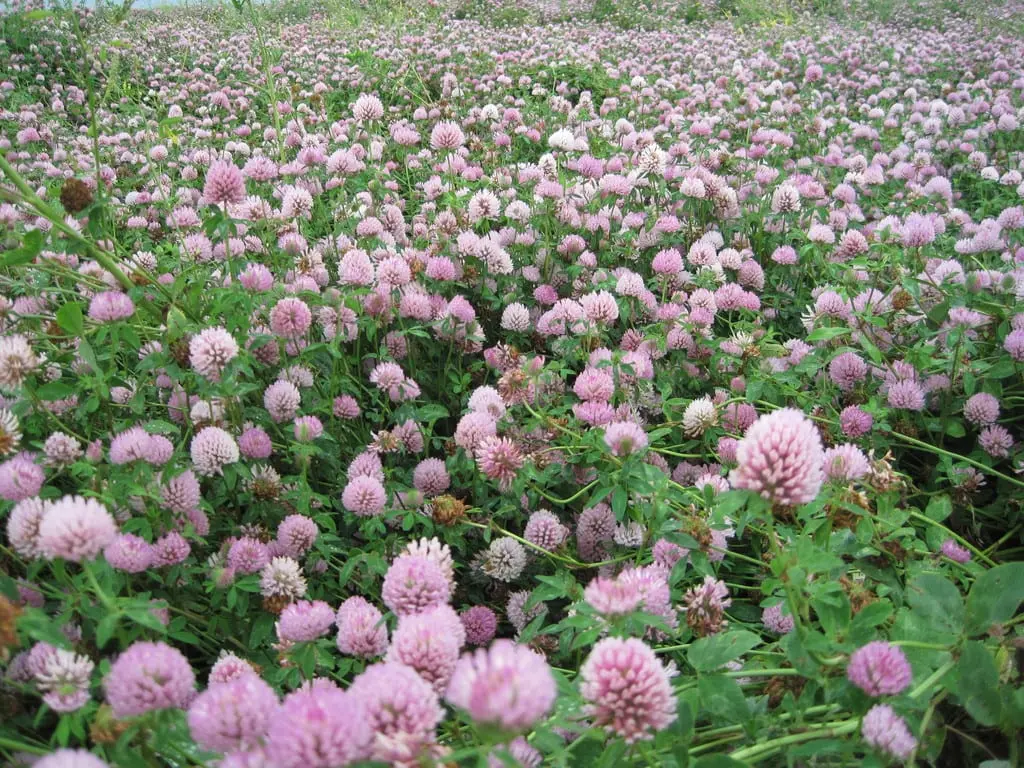
Colorless, almost transparent, with high taste, one of the best light varieties of honey. Upon crystallization, it turns into a solid, fine-crystalline white mass. Contains 34 – 35% glucose and 40 – 41% levulose. It is characterized by a naturally low diastase number (less than 10 Gothe units). It is used in the treatment of vitamin deficiency, as well as stomach diseases.
ATTENTION NURSING MOMS! The use of clover honey with a lack of breast milk in lactating women can provide a certain service, since the plants that serve as raw materials for this honeycomb have a milk-producing effect.
Mint honey
Bees make it from the nectar of the flowers of a perennial spicy plant – peppermint, which is why honey has such a pleasant aroma. Peppermint is widely cultivated and gives abundant harvests of quality honey. Mint honey is amber in color, contains a large amount of vitamin C.
It is crystallized by small grains of light yellow color. It is used as a choleretic, sedative, analgesic and antiseptic, as well as for diseases of the digestive system.
Dandelion honey
Has a golden yellow color. It is a very thick, viscous, rapidly crystallizing honey with a strong odor and a pungent taste. Bees make it from the nectar of the well-known and widespread weed – dandelion. It is used for anemia, loss of appetite, in the treatment of liver diseases.
Orange honey
One of the highest quality honey varieties. It tastes good and its delicious aroma is reminiscent of citrus flowers. Bees make orange honey from the nectar of citrus flowers – tangerines, lemons, oranges. It is used when there is a lack of vitamins in the body.
Motherwort honey
Bees collect it from the pale purple flowers of motherwort, or hearty grass that grows in wastelands. Honey has a light – golden, straw color, has a light aroma and a good specific taste. Motherwort flowers contain a lot of high-sugar nectar, so the plants are a valuable honey plant. It is used in the treatment of diseases of the nervous system and the cardiovascular system.
Rowan honey
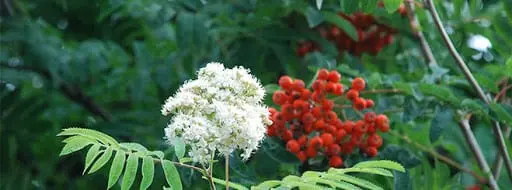
Rowan honey has a reddish color, strong aroma and good taste. Bees make this honey from flowering rowan nectars. It is used in the treatment of kidney disease. Rowan honey, boiled together with rowan berries, is used internally for hemorrhoids.
Bruised honey
Bees collect it from the pink and bright blue flowers of the bruise or blush, a very valuable southern plant – the honey plant. This light amber honey is considered first-class, has a spicy aroma and a very good taste. crystallizes slowly and has a thick consistency. It is used for insomnia and respiratory diseases.
Blueberry honey
Blueberry honey is light and has a reddish tint. Exceptionally aromatic and pleasant to the taste. Bees prepare honey from the nectar of the flowers of the well-known low blueberry bush. This honey is used in the treatment of kidney diseases.
Sage honey
Light amber in color, has a delicate pleasant aroma and pleasant taste. Bees make this honey from the nectar of bluish-purple flowers of a perennial shrub – sage, widely cultivated in Ukraine, in the Kuban, etc. It is used as an anti-inflammatory agent.
Carrot honey

It is produced from the nectar of fragrant, white flowers of umbrella-shaped inflorescences of a biennial cultivated carrot plant. Honey has a dark yellow color, pleasant aroma. It is used in the treatment of eye diseases. There are also other varieties of monofloral honey.
How many types of honey plants – so many honey. And yet, purely monofloral honeys practically do not exist and we can only talk about the predominance of some component.
Types of composite honey
May honey
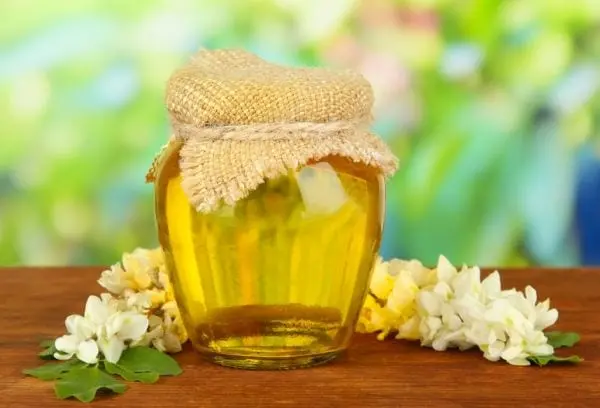
This honey collected by bees from early spring flowering melliferous plants in April – May. These are hazel (hazelnut), alder, willow – delirium, coltsfoot, violet, Norway maple, bird cherry, dandelion, sage, garden trees and bushes, etc. May honey is one of the most valuable varieties of honey. May honey has a golden color, a wonderful fragrant aroma. Possesses remarkable taste and medicinal properties. Recommended for a wide variety of diseases.
Meadow honey
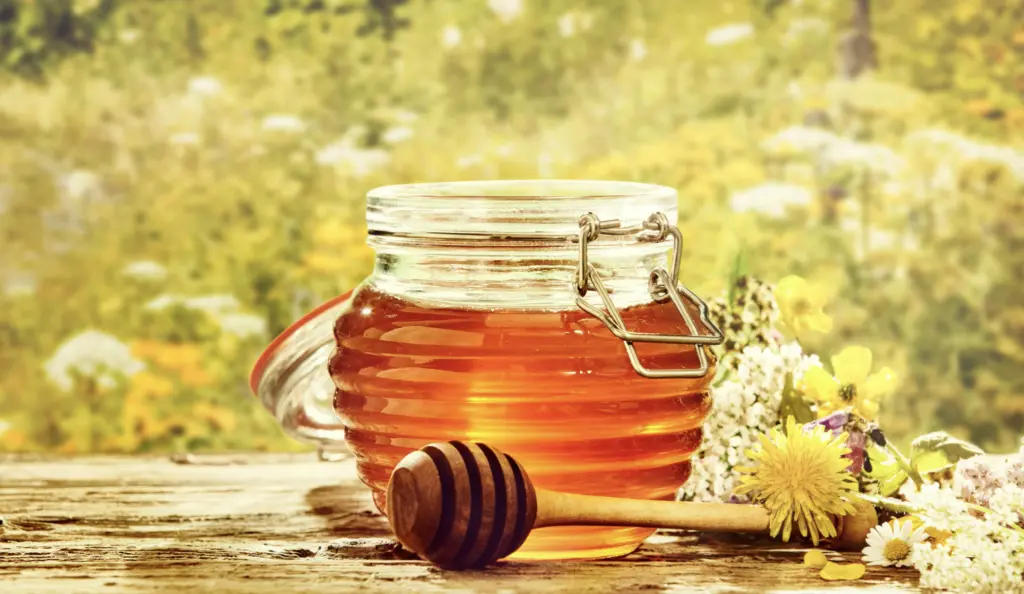
It is obtained from meadow flowers: dandelion, shepherd’s purse, thyme, thyme, white clover, mouse pea, meadow bruise thistle, wild mallow, St. John’s wort, cow parsnip, sweet clover, meadow cornflower, sage, chicory, motherwort, tartar and many other plants, etc. honey plants growing in meadows. If this honey is dominated by dandelion nectar, then it is more yellow in color.
Meadow honey tastes good and has a scent reminiscent of a bouquet of blooming meadow herbs. Meadow honey is characterized by high nutritional and medicinal properties. Differs in antibacterial action. It is used in the treatment of various diseases, especially kidney diseases, has a softening, anti-inflammatory and analgesic effect.
Forest honey

Bees produce it from forest melliferous plants: wild fruit trees – rose hips, hawthorns, Tatar maple (chernoklen), viburnum, willow, linden and other plants – raspberries, blackberries, lingonberries, fireweed (ivan-tea), heather, oregano, wild strawberry lungwort.
It has many shades: from light yellow to dark brown. It is always darker than the field. In terms of taste, honey is collected from forest herbs, is not inferior to meadow and field, but if there is a large amount of honeydew or nectar from buckthorn and heather, its taste decreases.
Forest honey from spring honey plants (mountain ash, willow, fruit, acacia, raspberry, blueberry) is in great demand. This honey has absorbed the healing qualities of forest herbs and therefore gained fame as a medicine for all diseases. It is used in the treatment of various diseases, and especially in kidney disease.
Field honey

This honey is obtained from coriander, sainfoin, lavender, rape, sow thistle, budyak, pikulnik, gill, phacelia and domesticated plants – sunflower, rapeseed, buckwheat, alfalfa, mustard. Has a sedative effect on the nervous system, it is recommended for headaches, insomnia, palpitations and pain in the solar plexus.
Mountain honey

By tradition, mountain honey is considered more valuable among polyfloral honey. Collected in alpine meadows at an altitude of over 1000 meters. It smells like forest honey, has absorbed the healing qualities of many alpine plants and gained fame as a panacea for many diseases. It is mainly used for diseases of the respiratory system.
Monofloral honeys, as a rule, have the smell of the plants from which they are collected and are distinguished by exquisite, subtle, piquant aromas. Various honeys are often mixed to obtain such exquisite reserves. The aroma of honey can be weak, strong, subtle, delicate, with a pleasant and unpleasant color.
When heated slightly, the aroma of honey increases. The physical properties of honey – aroma, taste, texture, depend on the set of melliferous plants and the maturity of honey. The quality of colored honey depends on the composition of plants, soil composition, climatic conditions (often in previous years), and bee breeds. Bees collect and carry into the hive not only nectar, but also any other sugar solutions: fruit juices, sugar syrup, honey.
Types of Honey. Special types of natural honey
Tobacco honey

Honey, dark brown in color, with a bitter taste and aroma similar to the smell of tobacco. Crystallizes slowly. Honey is obtained in the usual way – from the nectar of ordinary flowers. It is known to have a weak antimicrobial effect. However, the nutritional and medicinal properties of tobacco honey have been studied completely insufficiently by specialists, and for this reason this honey is not recommended for treatment and nutrition.
Stone honey

Stone honey is a rare and distinctive type of honey. It is collected by wild bees, laying it in the crevices of stone cliffs. Stone honey of fawn color, pleasant aroma and good taste. Honeycombs with honey almost do not contain the east and in their appearance they are a single crystallized substance, similar to candy.
Due to its high glucose content, honey is not very hygroscopic. Unlike ordinary bee honey, stone honey is not sticky, therefore it does not require special containers. It is well preserved without changing its qualities for several years. According to the place of origin (on a regional basis), it is called Abkhaz honey.
A kind of stone honey is also found in Uzbekistan, where it is collected by bees from dzhugara – a special type of millet. It is very thick and difficult to pump out, and after pumping it quickly crystallizes into a very dense, hard fat-like mass. Honey is white in color, with a strong aroma and pungent taste.
Powdered honey
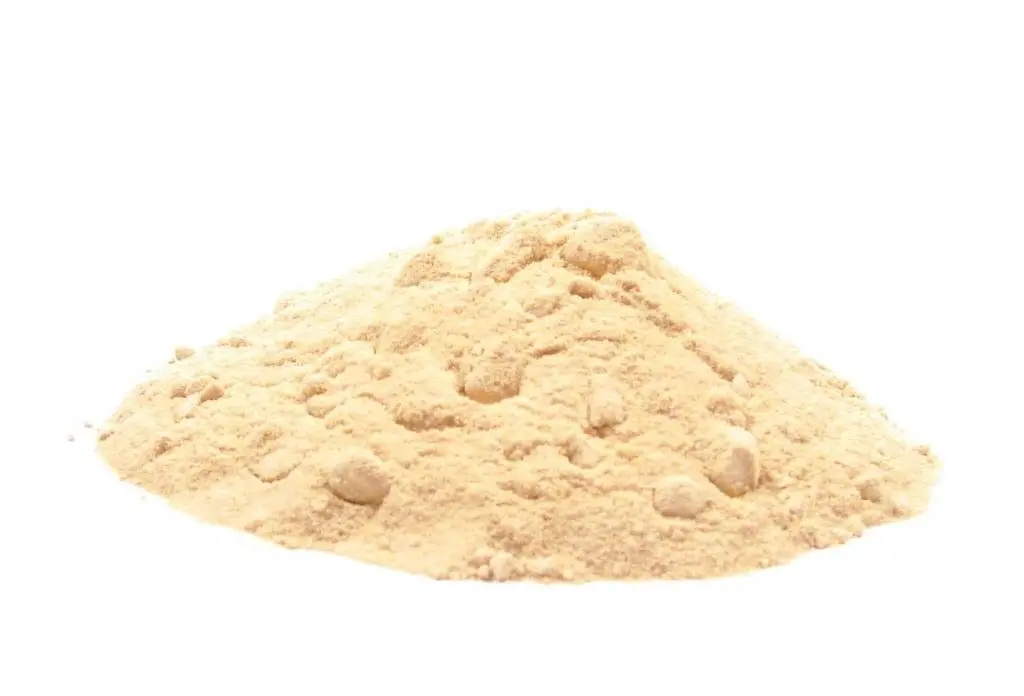
Powdered honey is very rare. It is not hygroscopic and contains a large amount of glucose and melicytosis. From such honey plants, bees collect such honey, it has not yet been clarified. And it is he who has a powdery consistency.
Poisonous honey

It is also called “drunk honey”. It is produced by bees from the nectar of azalea flowers, mountain laurel, andromeda, Pontic rhododendron, hellebore and some other plants, as well as flowers of marsh shrubs – heather and wild rosemary. In its pure form, this honey is poisonous. Such honey is revealed by studying its origin and biological tests. 50-100 g of this honey causes headache, vomiting, diarrhea, pallor or blue face, palpitations, weakness, itching, and sometimes convulsions.
The toxicity of honey is explained by the content of an alkaloid, andromedotoxin, in the nectar of rhododendron, which has a rich, intoxicating aroma. In Japan, bees collect poisonous honey from a plant called hotsutsai. Laurel trees growing in Mediterranean climates contain andromedotoxin, so the honey obtained from them is also poisonous.
Bees collect poisonous honey in the Caucasus, the Far East and in some other regions. However, it has not yet been precisely established from which plants in each case honey collection is carried out. For the bees themselves, this honey is non-toxic. Signs of poisoning with such honey appear 20 minutes (up to 2 hours) after ingestion.
In weak and emaciated people, this happens very violently: there is an increase in temperature, vomiting, itching, numbness, dizziness, loss of consciousness, the pulse becomes weak, threadlike (up to disappearance or slowing down to 50, even 30 beats per minute).
The victim’s face becomes transparent – a bluish tint, the pupils dilate, breathing becomes difficult, cold sweat appears on the skin, and the arms and legs hurt. This state lasts 4 to 5 hours.
Express honey
A number of domestic and foreign researchers in our country and abroad have proposed to produce a special medicinal honey called express. For its production, bees are given for processing 50 – 55% sugar syrup, to which medicinal substances, juices, vitamins are added.
The meaning of making such honey is seen by its inventors and propogandists in the fact that medicines are well preserved in it, losing their unpleasant taste. Yet he has not found widespread acceptance.
The consumer’s attitude to such honey ranges from a natural desire to test its medicinal properties to complete rejection, bordering on disgust. In any case, it is difficult to call such honey natural.










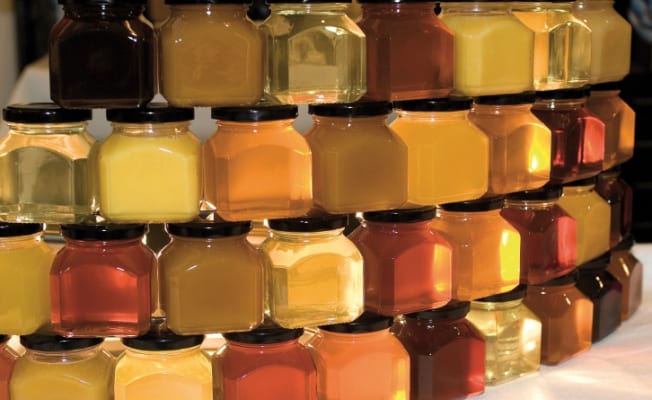
እባኮ እነዚህ የማር አይነቶችመገኛ ቦታቸው አልተለፀም
Słoneczka
Miód z cukru NIE MOŻE NAZYWAĆ SIĘ MIODEM.
Jest ZIOŁOMIODEM.
I tylko tak możecie o nim pisać.
Takie jest prawo w UE.
A ziołomiody są wytwarzane w Polsce od kilkudziesięciu już lat. Polecam ziołomiody z pokrzywy, czarnej porzeczki i aronii.
Pozdrawiam